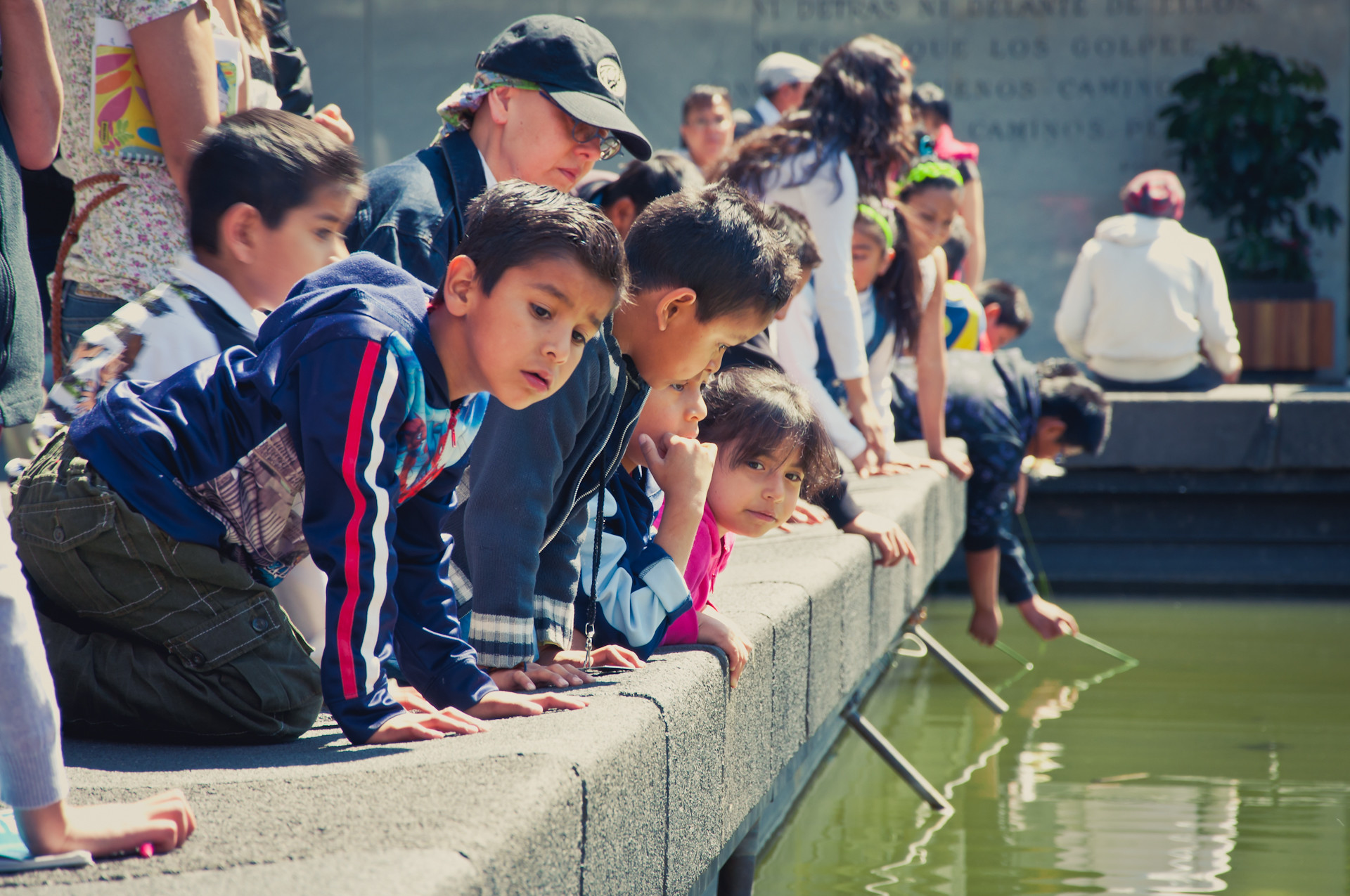Due to increasing trends in the identification of depression, anxiety, and despair among youth internationally, it has been suggested that “loneliness is a problem of epidemic proportions.” However, in a recent article published in Transcultural Psychiatry, authors Janis H. Jenkins, Giselle Sanchez, and Olga Lidia Olivas-Hernández suggest that the scope of research in this realm has been limited, compromised by narrow methodology characterized by quantitative measures and intrapersonal characteristics.
“Recently, there has been a groundswell of attention to the problem of loneliness in association with mental health status. In this article, we make the case that investigations of this problem have thus far been limited by the absence of interdisciplinary approaches.”

The authors propose a broadened conceptualization and approach to the study of trends in loneliness among youth using transdisciplinary techniques emphasizing social networks, relationships, and context. An ethnographic exploration of the lived experiences of adolescents in Tijuana, Mexico, is used to highlight the potential for an embedded approach to understanding loneliness among youth across the globe.
The terms loneliness and social isolation, though often related, have different implications in that loneliness pertains to the subjective experience of a person or persons whose social expectations are discrepant from their day-to-day social realities. Loneliness is not an inherent facet of social isolation; in the same way, poor-quality relationships have the potential to be more distressing than the absence of relationships altogether.
In recent years, loneliness has been identified as a significant public health problem occurring at high rates globally, and with detrimental effects on young people. Some research has indicated that loneliness is a significant social determinant of significant mental distress, both predictive of and reinforced by a variety of “common mental disorders.” Understandings of loneliness vary in important ways across disciplines and cross-culturally. Jenkins, Sanchez, and Olivas-Hernández illustrate the value of applying anthropological techniques and understandings of distress in particular to the field of psychiatry dominated by a medicalized model for loneliness.
The authors sought to enrich the current picture of loneliness painted by psychological survey data and inventories of symptoms. Succinctly put, “[e]thnographic research on loneliness with attention to lived experience can provide a foundation for better understanding of the range and types of loneliness that cannot be ascertained through epidemiological or survey data.”
Recent ethnographic research has highlighted unique mental health challenges among Mexican and limited community resources for addressing these concerns. Many tools available in the US to evaluate mental health lack cultural validity, yet increasing suicide rates among Mexican youth highlight a need for improvements in insights and supports.
Jenkins and colleagues devoted two years to examining the lives and experiences of 35 students at a large high school in Tijuana, primarily serving students from low to low-and-middle-income families. During this time, they employed “sociodemographic forms, semi-structured interviews, focus groups, psychometric assessment scales, and on-site observations” in their investigation, and connected with 71 total community members (students, parents, mental health care providers, and school community members included).
Most student participants engaged in four interviews throughout the project each, whereas single interviews took place with additional participants. Insights were enhanced through ethnographic observations and data from psychometric screening tools.
“An overall aim of the study is to generate an ethnographically informed understanding of contexts and processes that shape the emotional wellbeing and mental health of adolescents. To do so, we are working not only with adolescents, but also their parents, teachers, and mental health providers to gain multiple perspectives on the subjectivity of key stakeholders in relation to cultural meanings and practices surrounding help-seeking for problems perceived in relation to mental health.”
Results indicated that socio-structural insecurities and adversity have a pervasive impact on the everyday lives of students in this particular Tijuana school community. Limited public resources, precarious infrastructure, persistent community violence, a limited police presence, and more together “impact adolescents’ ability to spend time outside, make friends in their neighborhood, or leave their homes during the day as they are prohibited by their parents for their own safety.” Acknowledging these community-level characteristics alone, it is not challenging to imagine the potential barriers to consistent quality relationship maintenance.
Because many adolescents in this particular community belong to families in which all caregivers also work fulltime outside the home, they occupy significant roles caring for their siblings and younger relative and completing household chores. For some student participants, alone time was identified as a treasured opportunity to decompress and process the day’s events. Authors make the critical distinction between loneliness and time alone:
“Critical to those adolescents who experience soledad is the feeling of an absence of emotional connections understood by the adolescents as an absence of love and affection among family and friends. As our data show, soledad emerges within the context of fraught familial and peer relationships, not infrequently exacerbated by the frequent experience of being home alone for the entire day.”
Jenkins and team capture complexities and nuance unlikely to have been detected through the application of quantitative measures or using a cross-sectional technique. Their findings characterize loneliness as a broadly human phenomenon sometimes manifested in experiences of depression, anxiety, and other mental health challenges. They contextualize loneliness as an occurrence with a complex relationship to the community impossible to understand without attention to the social environment.
Their findings suggest that loneliness, in all its intricacy, may be an essential feature of depression in particular among youth in a non-clinical community setting. Multidisciplinary frameworks for understanding experiences of depression may remedy gaps in systems of support currently available to young people struggling in the context of community systems fraught with structural tumult.
“[Ethnographic] methods provide the foundation for seeking insight into the intricacies of personal, cultural, and political dimensions of loneliness, particularly with respect to the well- being of youth living under conditions of structural violence and precarity. Our research […] provides the empirical grounds for proceeding with the specific investigation of loneliness, particularly in relation to depression, as part of the research agenda for the burgeoning field of global mental health. […] loneliness, as a vital, intricate, and intimate emotional realm requires breadth and depth of understanding.”
****
Jenkins, J. H., Sanchez, G., & Olivas-Hernández, O. L. (2019). Loneliness, adolescence, and global mental health: Soledad and structural violence in Mexico. Transcultural Psychiatry, 136346151988012. DOI: 10.1177/1363461519880126















I called it over a year ago, the “mental health” workers want to make loneliness a “mental illness.” Oh, and seemingly treatable with their neurotoxic “antidepressants”?
“poor-quality relationships have the potential to be more distressing than the absence of relationships altogether,” absolutely. And all relationships with “mental health” workers are poor quality relationships, since the “mental health” workers always have ulterior motives, like turning people into lifelong “mental patients” with their neurotoxins, for profit. Or just out and out stealing from you, as an asinine psychologist recently attempted to do to me, with a BS “art manager” contract. He was very embarrassed when I pointed out the systemic child abuse and rape covering up crimes of the “mental health” industries though.
https://www.indybay.org/newsitems/2019/01/23/18820633.php?fbclid=IwAR2-cgZPcEvbz7yFqMuUwneIuaqGleGiOzackY4N2sPeVXolwmEga5iKxdo
https://www.madinamerica.com/2016/04/heal-for-life/
And these child abuse and rape covering up crimes are by DSM design.
https://www.psychologytoday.com/us/blog/your-child-does-not-have-bipolar-disorder/201402/dsm-5-and-child-neglect-and-abuse-1
https://www.theguardian.com/lifeandstyle/2019/mar/27/are-sexual-abuse-victims-being-diagnosed-with-a-mental-disorder-they-dont-have
The “mental health” workers need to get away from the children, and stop medicalizing human experiences. They are murdering 8 million innocent people a year, every year, based upon their “invalid” DSM disorders, and with their psychiatric neurotoxins.
https://www.nimh.nih.gov/about/directors/thomas-insel/blog/2015/mortality-and-mental-disorders.shtml
https://www.nimh.nih.gov/about/directors/thomas-insel/blog/2013/transforming-diagnosis.shtml
Leave the children alone! Learn to live and let live instead! And we really should get rid of the scientifically “invalid,” systemic child abuse and rape covering up “mental health” industries altogether. Since all their child abuse and rape covering up crimes also function to aid, abet, and empower the pedophiles and child sex traffickers.
https://www.amazon.com/Pedophilia-Empire-Chapter-Introduction-Disorder-ebook/dp/B0773QHGPT
https://community.healthimpactnews.com/topic/4576/america-1-in-child-sex-trafficking-and-pedophilia-cps-and-foster-care-are-the-pipelines
The “mental health” industry, with all their systemic child abuse and rape covering up, pedophile aiding, abetting, and empowerment crimes, are destroying Western civilization from within. Approximately 400,000,000 – mostly innocent child abuse survivors – have been murdered with the psychiatric drugs over the past 50 years. Make our modern day psychiatric holocaust end!
And no, loneliness should not be turned into a “mental illness.” The “invalid” DSM “bible” should be flushed, and the psychiatrists and psychologists should end their mass murder of innocent people, with the psych drugs, instead.
Report comment
Psychiatry causes alienation, rejection, loneliness.
Like any other cult they cut you off from friends ASAP.
Report comment
Do they ever. Severely so.
If they encourage you, you might not need them.
Lord it scares me for kids. I hope parents read here, I hope
they are careful.
Report comment
Psychiatrists do cause alienation, thus loneliness, you’re right. Thankfully, my friends never met my defamatory “mental health” workers, but “mental health” workers did destroy my marriage. And they harmed my relationship with other family members for a while. Although, they did tell me to “quit all your activities and concentrate on the meds.” Which was advise I did not take, but had I, that would have destroyed my relationships with my friends.
And since the psychiatrists and psychologists have bought out my childhood religion, with their child rape covering up crimes, they did destroy my relationship with my childhood religion for good. But who wants to be in a hypocritically called Christian religion, that’s actually a DSM “bible” thumping, child rape covering up, religion? Not me.
So you are right, the “mental health” workers do cause alienation, rejection, and thus loneliness. And they are good at taking the problems they and their drugs create, and turning them in to so called “mental illnesses.” So, of course, they now want loneliness to be a “mental illness.” These satanic DSM “bible” thumpers have lost their minds with their unchecked power.
Report comment
Before we flush the DSM, we should use it to save on toilet paper.
First it is harsh on the head and then it is harsh on the butt.
Report comment
The DSM is filled with “bullish-t,” I do agree with Allen Frances on that. But I think I’ll stick to my soft Charmin instead. The damage to the brain was more than enough. And the DSM is already filled with enough “sh-t,” that it should just be flushed.
Report comment
Would this be considered a scientific study?
The best way to tackle loneliness is to consider it a mental health ‘problem’ and then present it to the public, educators and especially teens and kids. Make them feel mentally ill, then give them therapy for their loneliness, until they become loonliness.
Best way to deal with issues is to make people feel broken because of their feelings.
Corral society with the idea of loneliness and once you get them into the ‘therapy’ room, discover depression, anxiety as co-morbid disorders, and perhaps a few more. Nice clusters.
Therapy and meds highly recommended.
This way, they will feel even more different at which point you can introduce more helpful shit.
But always make sure that around the “mental health” words, you use words that sound psycho-social, to make it appear an article where we ‘recognize’ issues, so that those ‘issues’, support the idea of mental health, which is really just a word for mental illness.
I don’t see an article on all the wonderful programs that kids LOVE, that kids are involved in, NOT because of “mental health”, but just because.
Next
Report comment
Good points Sam.
Report comment
Apparently, scientists are studying snoring. Because there are drugs that treat snoring.
Report comment
“Authors make the critical distinction between loneliness and time alone” …
I’m glad they are still able to do that …
“the burgeoning field of global mental health”, Oh dear.
Report comment
Somehow, I found the entire article alienating from the start. The language is very “clinical,” and there is a confusion between social conditions and “mental health diagnoses” that the authors never begin to address. If loneliness is caused by social conditions, then how does it even become a “mental illness?” If “mental illnesses” as defined by the DSM can be caused by loneliness, which is itself caused by adverse social conditions clearly identified in the research, how are they “illnesses” at all? Should they not instead inform the need for changes in the social structure that is increasing the difficulty people are having creating meaningful relationships?
A lot of fancy words that seem to obscure more than they illuminate.
Report comment
They think that we won’t get the meaning of those fancy words.
Anyone familiar with cults, recognizes the ’round and round we go’ articles.
We have to present it to young psychs in the making as studies.
How better can one ‘help’ people than to study all those phenomena.
Report comment
Things like religion, politics and even social etiquette just truly do not matter to life and existence, they only matter when we, as part of human endeavors, make them matter, and doing so has resulted in almost nothing but harm at every point on the spectrum from social rejection to atrocities like holocausts and crusades.
People need to just chill out, and find the love for another by realizing they are a vessel for life no different than you, except for all the perceptions that truly don’t matter.
Report comment